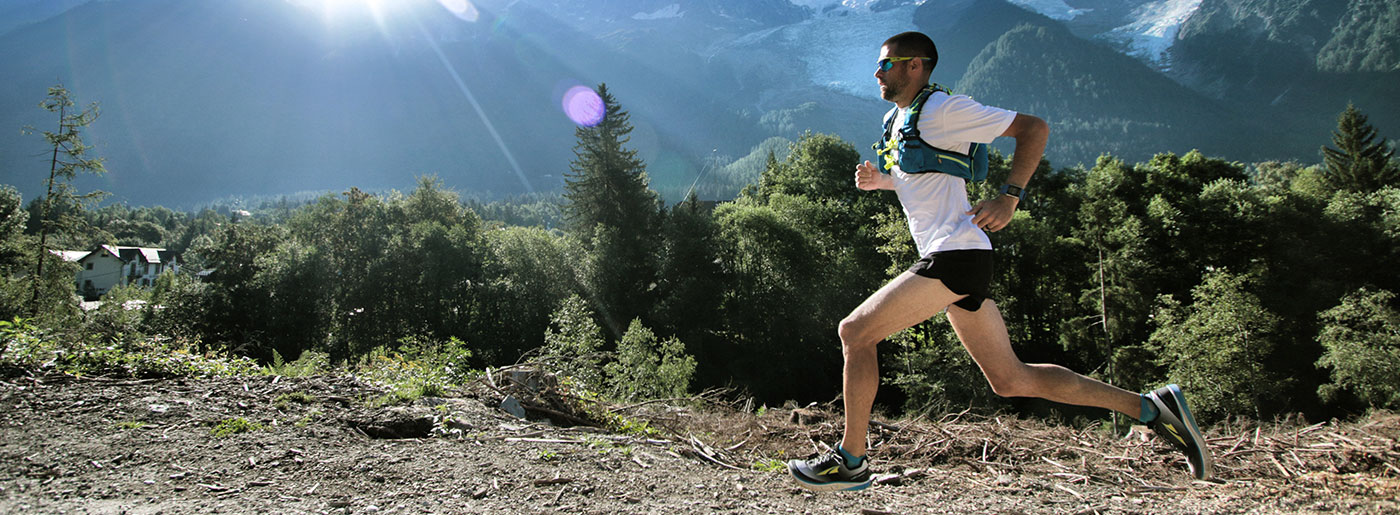World-class endurance runner Calum Neff is a self-coached runner who has raced just about every distance on track and trail and broken a few records in the process … all while working full time and being a dad of three. How does he do it all – while staying motivated and physically fit for the challenge?
In October 2016, Canadian Calum Neff set his 2nd world record for a stroller marathon pushing his eldest daughter, Aley (4), in Canada’s Scotiabank Toronto Waterfront Marathon, finishing with a 2:31:21.
When not behind a stroller, he’s run some of the most grueling foot races on earth, including the Canadian Death Race in 2013, coming in 4th overall (13:54:51, 125 km/77.67 mi with 5,182 m/17,000 ft of vertical climb).
On top of being a dad of three girls and holding down a full-time job, Calum trains year-round for his various running pursuits, acting as his own coach.
How does he find motivation and stay mentally and physically fit for any challenge while prioritizing family?
In this first part of our self-coaching article series, we set out to explore motivation with Calum as a self-coached athlete. With other overarching priorities in Calum’s life, we asked him how and where he finds the motivation to train and succeed in his endurance-running endeavors.
Also read: Calum Neff’s tips for tools and technology and his resource guide for self-coached runners.
Pick your target(s)
To get motivated as a self-coached runner, the first thing Calum does is identify his target races. This establishes the big picture goals he’s training for and gives him some purpose and urgency.
Calum’s next goal race is Comrades in South Africa in June 2018. “I’ll spend 10 days at altitude in Ecuador in May before I head over and also complete my longest long run 4 weeks before Comrades as I compete in the Wings for Life World Run,” Calum says.
Build a schedule
With the big goals identified, Calum says it’s important to build a schedule with smaller goals along the way to help you stay motivated.
For example, local 5K and 10K races can be incorporated as part of your training schedule while giving you the extra incentive to pick it up a notch.
For example, local 5K and 10K races can be incorporated as part of your training schedule while giving you the extra incentive to pick it up a notch.
“I just ran a new PR in the 10K of 31:36 as I build up towards my goal race of Comrades in South Africa in June 2018,” Calum says.
Relax
Scheduling aside, Calum is a big believer in recovery. It helps both mentally and physically. He says the best thing he can do to prepare for a race, aside from being fit, is to make sure he is healthy and uninjured going into it.
If he misses or needs to change a workout to accommodate other things going on in his life, he knows that one day isn’t going to be a deal breaker.
That means his schedule needs to be dynamic. He never loses sight of the bigger picture and doesn’t sweat the small stuff on any given day. If he misses or needs to change a workout to accommodate other things going on in his life, he knows that one day isn’t going to be a deal-breaker. He can make up and adjust as he goes.
Despite his world-class standing in the endurance running arena, Calum Neff says family time and being a dad is the top priority in his life. (Read how Calum often combines fitness and family with stroller running).
Focusing on family and a full-time job is also a good break for his training recovery. “If I miss a day of running, I don’t stress out about it,” he says. “It’s all about consistency over the long term. It really takes a number of years before you see the full benefits of your training efforts.”
Be social
To stay accountable to your schedule, Calum suggests getting involved in a social running community.
Join some group runs in your area to get you motivated to roll out of bed in the early hours or on those gray days.
Also, having a social presence in the online running community can help you stay on track.
Strava
This online social media platform for athletes can automatically import your Polar activities. You can add pictures, a catchy title, show who you ran with, and how you compare on the leaderboards for popular stretches of routes (“segments”).
“As a self-coached, solo runner, online communities can add a social aspect to all your runs as well as keep you honest in your training – as they say, if it didn’t happen on Strava, it didn’t happen,” says Calum.
Polar Flow Communities
Gaining traction and popularity, Polar Flow communities are filled with fellow Flow users with similar interests. The community tab allows you to join like-minded groups and the feed allows you to follow and interact with other athletes and see their training
“Sharing a workout now comes with the option of adding a photo, which will overlay your distance and time right on the photo for a really cool effect,” says Calum.
Check out the “Explore” button to find mutual Polar users in your area or the place of your next adventure.
Calum admits motivation can sometimes be tough so it is a key aspect of self-coaching.
“You never regret doing a run once it’s done.
“On those cold days or when you’re deep into your marathon training and dog tired, it can be really hard to dig deep enough to find motivation as a self-coached runner. But what keeps you going is knowing that you never regret doing a run once it’s done, no matter how much you initially didn’t want to put on those running shoes.”
If you liked this post, don’t forget to share so that others can find it, too.
Or give it a thumbs up!
I like this article
Please note that the information provided in the Polar Blog articles cannot replace individual advice from health professionals. Please consult your physician before starting a new fitness program.






